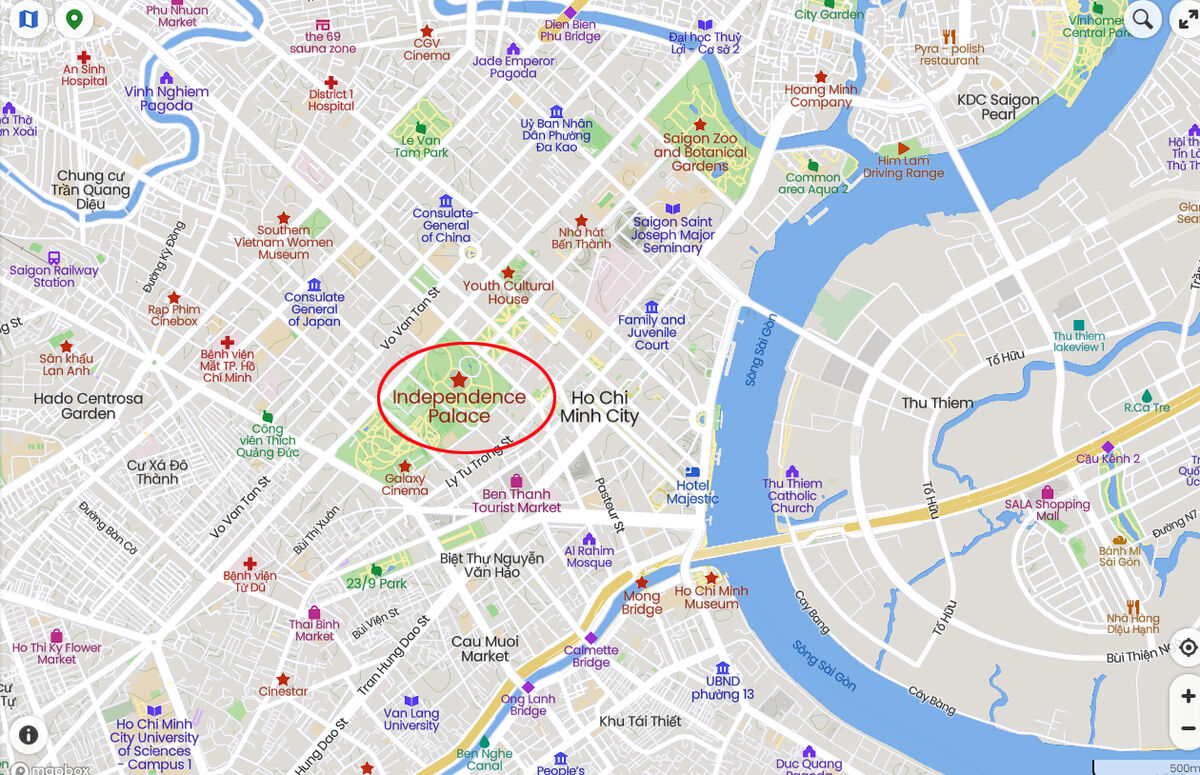Vietnam: Saigon Part 6 - Independence Palace (Formerly The Presidential Palace)
Dec 2, 2022 15:23:27 #
One of the very interesting sites we visited was Independence Palace which was formerly the Presidential Palace in Saigon, now Ho Chi Minh City.
The Independence Palace (Vietnamese: Dinh Độc Lập), also publicly known as the Reunification Convention Hall (Vietnamese: Hội trường Thống Nhất), is a landmark in Ho Chi Minh City (formerly known as Saigon), Vietnam. It was designed by architect Ngô Viết Thụ and was the home and workplace of the President of the Republic of (South) Vietnam. It was the site of the Fall of Saigon on 30 April 1975 that ended the Vietnam War, when a North Vietnamese Army tank crashed through its gates.
In 1858, France launched an attack on Đà Nẵng, starting its invasion of Vietnam. In 1867, France completed its conquest of southern Vietnam (Cochinchina), comprising the provinces of Biên Hòa, Gia Định, Định Tường, Vĩnh Long, An Giang, and Hà Tiên. To consolidate the newly established colony, on 23 February 1868, Pierre-Paul de La Grandière, Governor of Cochinchina, held a ceremony to lay the foundation stone of a new palace to replace the old wooden palace built in 1863. The new Governor's Palace was designed by Achille-Antoine Hermitte, who was also the architect of the Hong Kong City Hall. The first cubic stone, measuring 50 cm along each edge, with indentations containing French gold and silver coins bearing Napoleon III's effigy, came from Biên Hòa.
The complex covered an area of 12 hectares, including a palace with an 80-meter-wide façade, a guest-chamber capable of accommodating 800 people, with spacious gardens covered by green trees and a lawn. Most of the building materials were imported from France. Owing to the Franco-Prussian War of 1870, construction fell behind schedule and was not completed until 1873. The palace was named Norodom Palace after the then king of Cambodia, Norodom (1834–1904). The avenue in front of the palace bore the same name. From 1871 to 1887, the palace was used by the French Governor of Cochinchina (Gouverneur de la Cochinchine); therefore, it was referred to as the Governor’s Palace. From 1887 to 1945, all governors-general of French Indochina used the palace as their residence and office. The office of the Cochinchinese governors was relocated to a nearby villa.
On 9 March 1945, Japan defeated and replaced France in a successful coup. Norodom Palace became the headquarters of Japanese colonial officials in Vietnam. In September 1945, Japan surrendered to the Allied forces in World War II and France returned to Vietnam and Norodom Palace was restored to its position as the office of the French colonists.
Republic of Vietnam
On 7 May 1954, France surrendered to the Việt Minh after its defeat at the Battle of Điện Biên Phủ. France agreed to sign the Geneva Accords and withdrew its troops from Vietnam. According to the accords, Vietnam would be divided pending general elections. The 17th Parallel would act as the temporary border until a vote based on universal suffrage was held to establish a unified Vietnamese government. North Vietnam was under the control of the Việt Minh communists, while South Vietnam was under the anti-communist State of Vietnam. On 7 September 1954, Norodom Palace was handed over to the prime minister of the State of Vietnam, Ngô Đình Diệm by a representative of the French presence in Vietnam, General Paul Ély.
In 1955, Diệm defeated former Emperor Bảo Đại, the chief of state of the State of Vietnam, in a referendum. Ngô Đình Diệm declared himself president of the newly proclaimed Republic of Vietnam and renamed the building the Independence Palace. According to fengshui, the palace is located on a dragon’s head; therefore, it was also referred to as the Dragon’s Head Palace.
On 27 February 1962, two pilots of Diệm's Republic of Vietnam Air Force, Nguyễn Văn Cử and Phạm Phú Quốc, rebelled and flew two A-1 Skyraider aircraft towards the palace and bombed it, instead of going on a raid against the Việt Cộng. As a result, almost the entire left wing was destroyed. However, Diệm and his family escaped the assassination attempt. As it was almost impossible to restore the palace, Diệm ordered it demolished and commissioned a new building in its place. The new palace was constructed according to a design by Ngô Viết Thụ, a Vietnamese architect who won the First Grand Prize of Rome (Grand Prix de Rome) in 1955, the highest recognition of the Beaux-Arts school in Paris. He was also a laureate of the Prix de Rome awarded by the French government.
The construction of the new Independence Palace started on 1 July 1962. Meanwhile, Diệm and his ruling family moved to Gia Long Palace (today the Ho Chi Minh City Museum). However, Diệm did not see the completed hall as he and his brother and chief adviser Ngô Đình Nhu were assassinated after a coup d'état led by General Dương Văn Minh in November 1963. The completed hall was inaugurated on 31 October 1966 by the chairman of the National Leadership Committee, General Nguyễn Văn Thiệu, who was then the head of a military junta. The Independence Hall served as Thiệu’s home and office from October 1967 to 21 April 1975, when he fled the country as communist North Vietnamese forces swept southwards in the decisive Ho Chi Minh Campaign.
On 8 April 1975, Nguyễn Thanh Trung, a pilot of the South Vietnamese air force and an undetected communist spy flew an F-5E aircraft from Biên Hòa Air Base to bomb the palace but caused no significant damage. At 10:45 on 30 April 1975, a tank of the North Vietnamese army bulldozed through the main gate, effectively ending the Vietnam War.
In November 1975, after the negotiation convention between the communist North Vietnam and their colleagues in South Vietnam was completed, the Provisional Revolutionary Government renamed the palace Reunification Hall (Hội trường Thống Nhất).
The palace is depicted on the 200-đồng note of South Vietnam.
https://en.wikipedia.org/wiki/Independence_Palace
For more images of Saigon (Ho Chi Minh City) and narratives, please see my previous post:
https://www.uglyhedgehog.com/t-758304-1.html
https://www.uglyhedgehog.com/t-758452-1.html
https://www.uglyhedgehog.com/t-758616-1.html
https://www.uglyhedgehog.com/t-758872-1.html
https://www.uglyhedgehog.com/t-759062-1.html
I hope you enjoy them!
Mark
The Independence Palace (Vietnamese: Dinh Độc Lập), also publicly known as the Reunification Convention Hall (Vietnamese: Hội trường Thống Nhất), is a landmark in Ho Chi Minh City (formerly known as Saigon), Vietnam. It was designed by architect Ngô Viết Thụ and was the home and workplace of the President of the Republic of (South) Vietnam. It was the site of the Fall of Saigon on 30 April 1975 that ended the Vietnam War, when a North Vietnamese Army tank crashed through its gates.
In 1858, France launched an attack on Đà Nẵng, starting its invasion of Vietnam. In 1867, France completed its conquest of southern Vietnam (Cochinchina), comprising the provinces of Biên Hòa, Gia Định, Định Tường, Vĩnh Long, An Giang, and Hà Tiên. To consolidate the newly established colony, on 23 February 1868, Pierre-Paul de La Grandière, Governor of Cochinchina, held a ceremony to lay the foundation stone of a new palace to replace the old wooden palace built in 1863. The new Governor's Palace was designed by Achille-Antoine Hermitte, who was also the architect of the Hong Kong City Hall. The first cubic stone, measuring 50 cm along each edge, with indentations containing French gold and silver coins bearing Napoleon III's effigy, came from Biên Hòa.
The complex covered an area of 12 hectares, including a palace with an 80-meter-wide façade, a guest-chamber capable of accommodating 800 people, with spacious gardens covered by green trees and a lawn. Most of the building materials were imported from France. Owing to the Franco-Prussian War of 1870, construction fell behind schedule and was not completed until 1873. The palace was named Norodom Palace after the then king of Cambodia, Norodom (1834–1904). The avenue in front of the palace bore the same name. From 1871 to 1887, the palace was used by the French Governor of Cochinchina (Gouverneur de la Cochinchine); therefore, it was referred to as the Governor’s Palace. From 1887 to 1945, all governors-general of French Indochina used the palace as their residence and office. The office of the Cochinchinese governors was relocated to a nearby villa.
On 9 March 1945, Japan defeated and replaced France in a successful coup. Norodom Palace became the headquarters of Japanese colonial officials in Vietnam. In September 1945, Japan surrendered to the Allied forces in World War II and France returned to Vietnam and Norodom Palace was restored to its position as the office of the French colonists.
Republic of Vietnam
On 7 May 1954, France surrendered to the Việt Minh after its defeat at the Battle of Điện Biên Phủ. France agreed to sign the Geneva Accords and withdrew its troops from Vietnam. According to the accords, Vietnam would be divided pending general elections. The 17th Parallel would act as the temporary border until a vote based on universal suffrage was held to establish a unified Vietnamese government. North Vietnam was under the control of the Việt Minh communists, while South Vietnam was under the anti-communist State of Vietnam. On 7 September 1954, Norodom Palace was handed over to the prime minister of the State of Vietnam, Ngô Đình Diệm by a representative of the French presence in Vietnam, General Paul Ély.
In 1955, Diệm defeated former Emperor Bảo Đại, the chief of state of the State of Vietnam, in a referendum. Ngô Đình Diệm declared himself president of the newly proclaimed Republic of Vietnam and renamed the building the Independence Palace. According to fengshui, the palace is located on a dragon’s head; therefore, it was also referred to as the Dragon’s Head Palace.
On 27 February 1962, two pilots of Diệm's Republic of Vietnam Air Force, Nguyễn Văn Cử and Phạm Phú Quốc, rebelled and flew two A-1 Skyraider aircraft towards the palace and bombed it, instead of going on a raid against the Việt Cộng. As a result, almost the entire left wing was destroyed. However, Diệm and his family escaped the assassination attempt. As it was almost impossible to restore the palace, Diệm ordered it demolished and commissioned a new building in its place. The new palace was constructed according to a design by Ngô Viết Thụ, a Vietnamese architect who won the First Grand Prize of Rome (Grand Prix de Rome) in 1955, the highest recognition of the Beaux-Arts school in Paris. He was also a laureate of the Prix de Rome awarded by the French government.
The construction of the new Independence Palace started on 1 July 1962. Meanwhile, Diệm and his ruling family moved to Gia Long Palace (today the Ho Chi Minh City Museum). However, Diệm did not see the completed hall as he and his brother and chief adviser Ngô Đình Nhu were assassinated after a coup d'état led by General Dương Văn Minh in November 1963. The completed hall was inaugurated on 31 October 1966 by the chairman of the National Leadership Committee, General Nguyễn Văn Thiệu, who was then the head of a military junta. The Independence Hall served as Thiệu’s home and office from October 1967 to 21 April 1975, when he fled the country as communist North Vietnamese forces swept southwards in the decisive Ho Chi Minh Campaign.
On 8 April 1975, Nguyễn Thanh Trung, a pilot of the South Vietnamese air force and an undetected communist spy flew an F-5E aircraft from Biên Hòa Air Base to bomb the palace but caused no significant damage. At 10:45 on 30 April 1975, a tank of the North Vietnamese army bulldozed through the main gate, effectively ending the Vietnam War.
In November 1975, after the negotiation convention between the communist North Vietnam and their colleagues in South Vietnam was completed, the Provisional Revolutionary Government renamed the palace Reunification Hall (Hội trường Thống Nhất).
The palace is depicted on the 200-đồng note of South Vietnam.
https://en.wikipedia.org/wiki/Independence_Palace
For more images of Saigon (Ho Chi Minh City) and narratives, please see my previous post:
https://www.uglyhedgehog.com/t-758304-1.html
https://www.uglyhedgehog.com/t-758452-1.html
https://www.uglyhedgehog.com/t-758616-1.html
https://www.uglyhedgehog.com/t-758872-1.html
https://www.uglyhedgehog.com/t-759062-1.html
I hope you enjoy them!
Mark
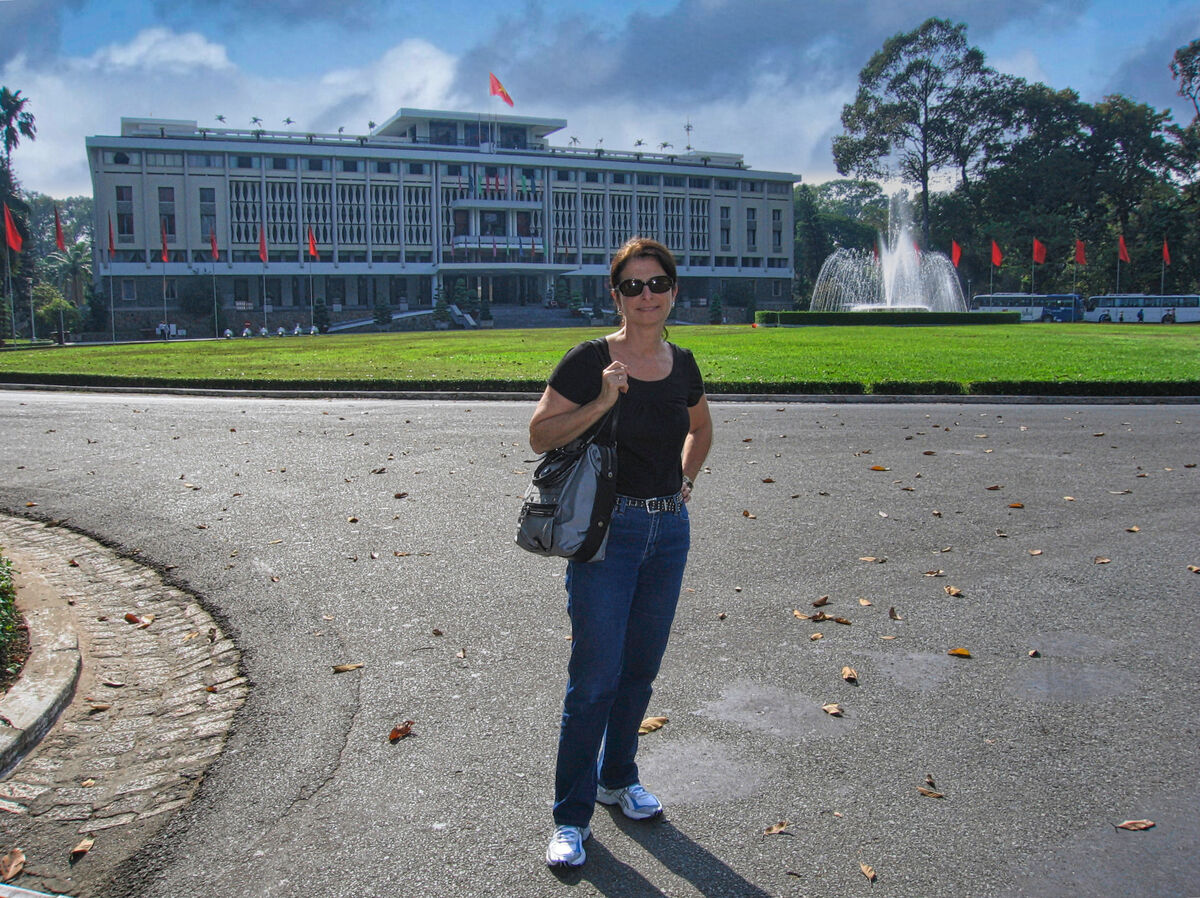
(Download)
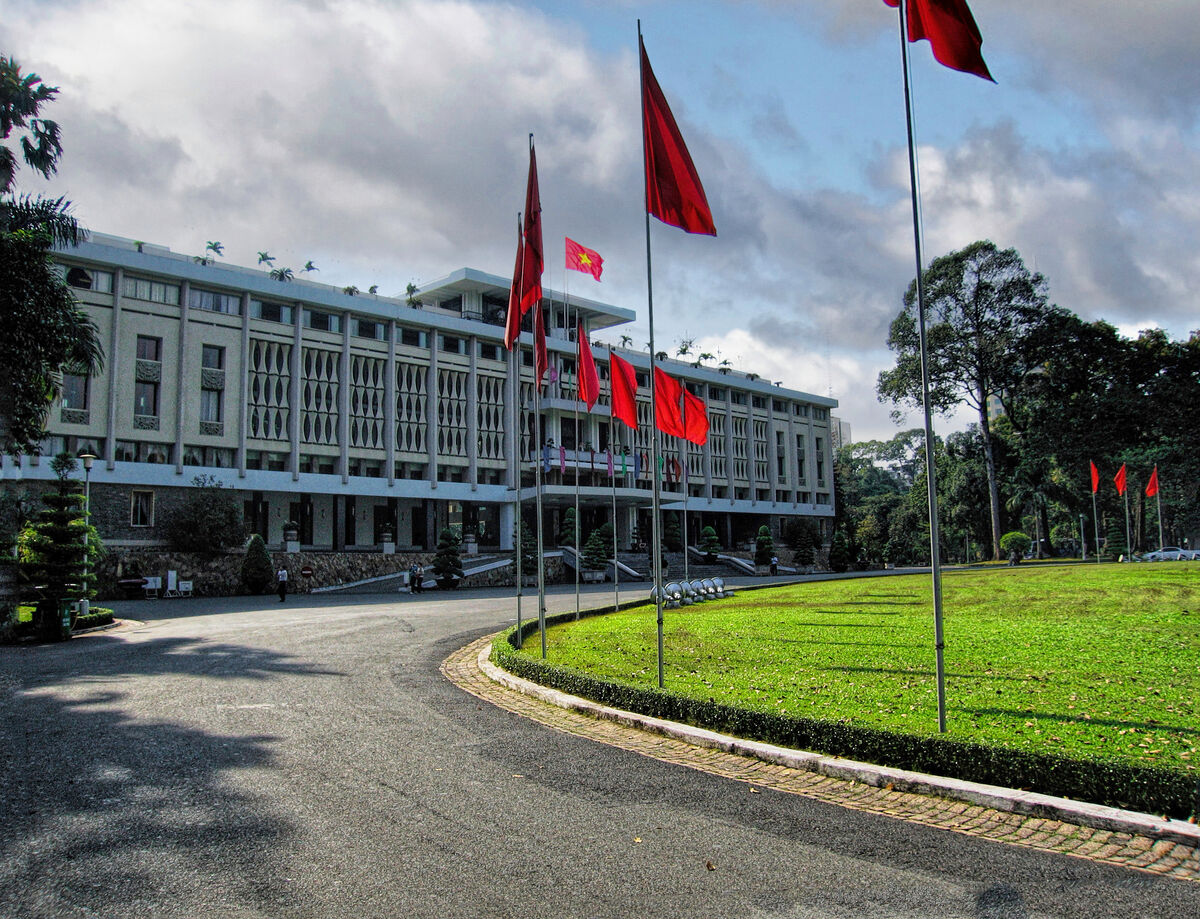
(Download)
The Banquet Chamber
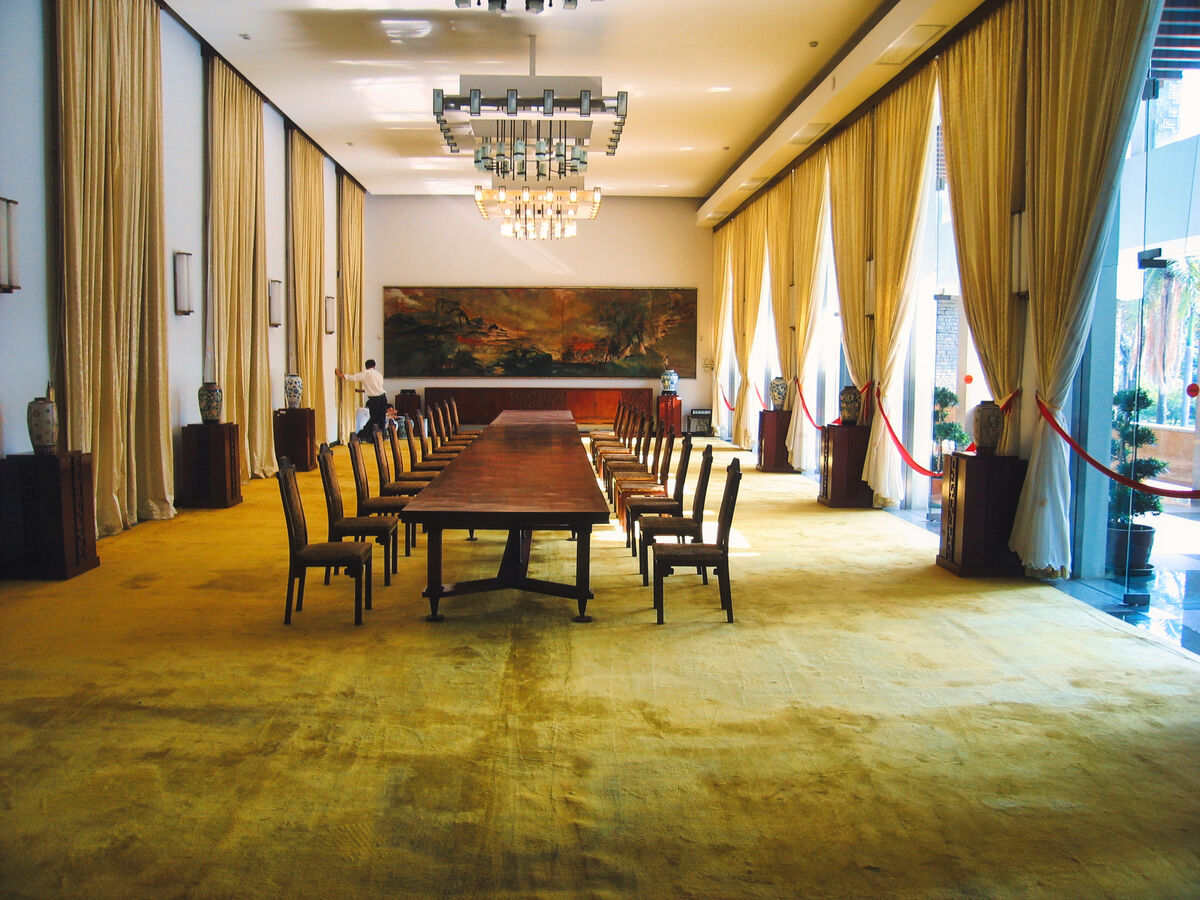
(Download)
The Conference Hall
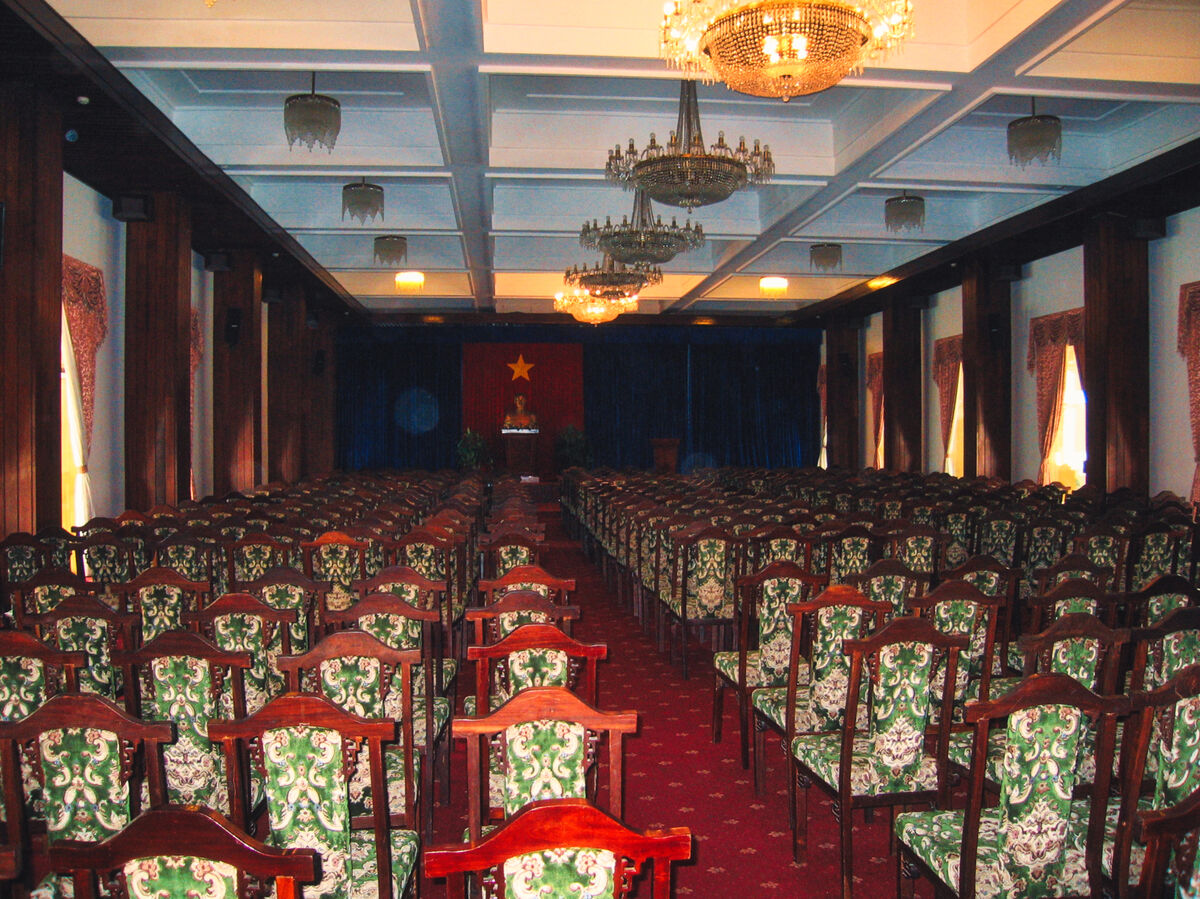
(Download)
The Presidential Office
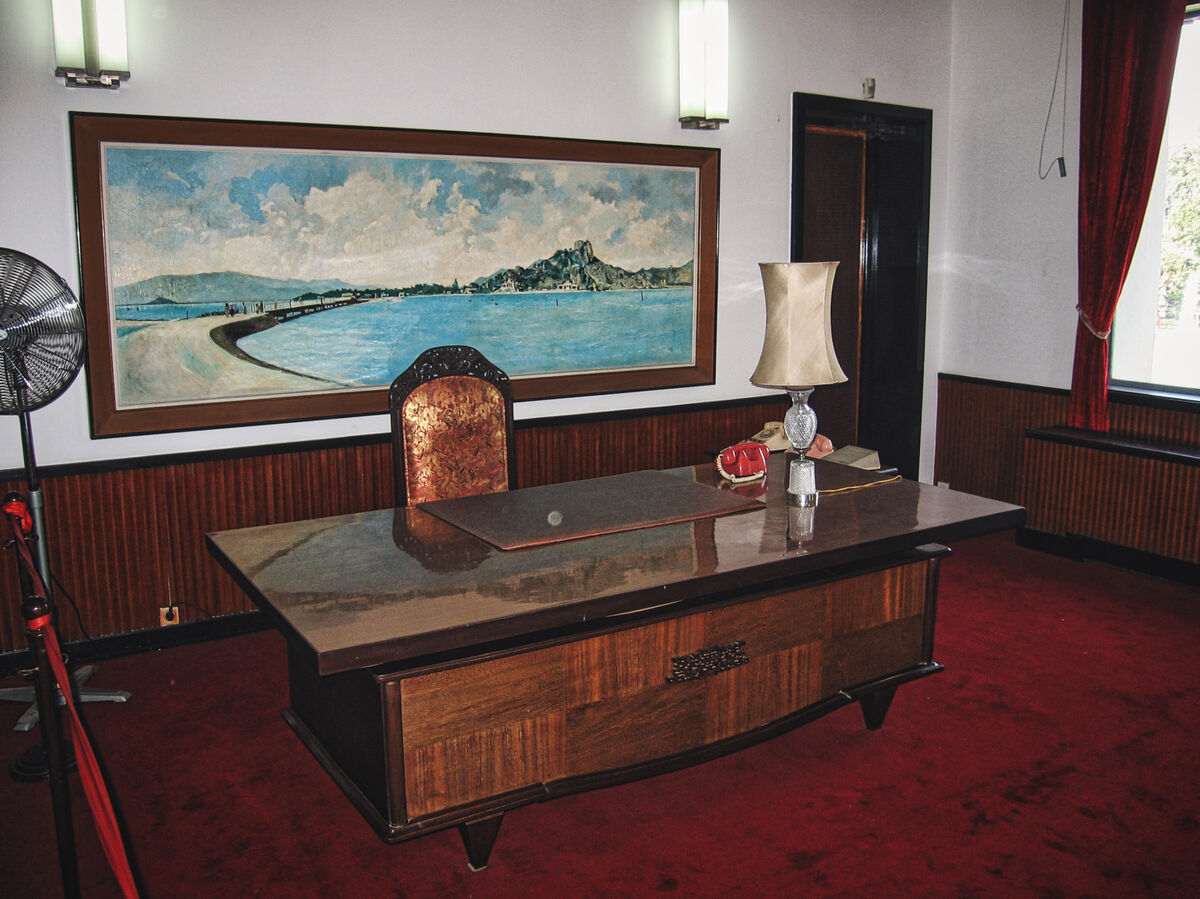
(Download)
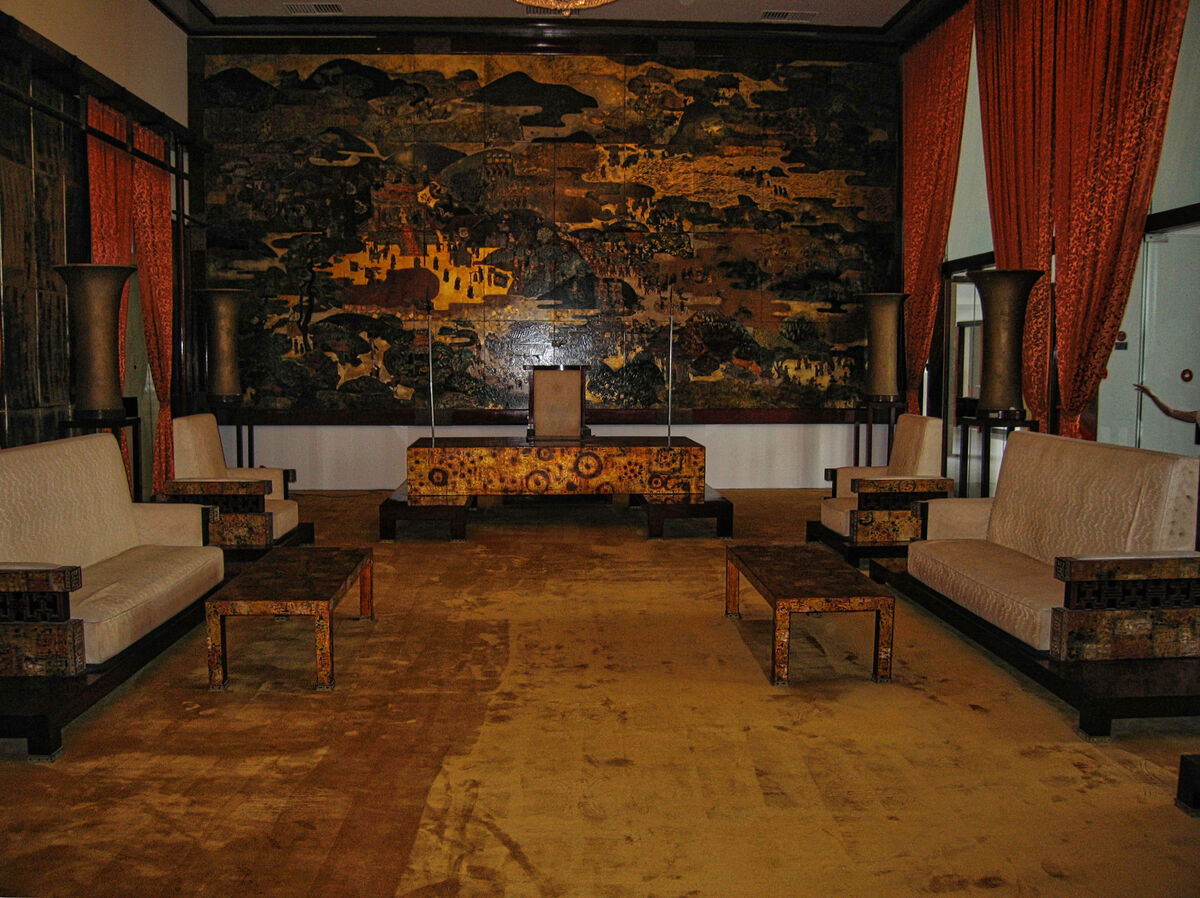
(Download)
Vietnamese T-54 tanks in the gardens at the entrance of the palace. These were the first to break through the gates in 1975 effectively ending the Vietnam War
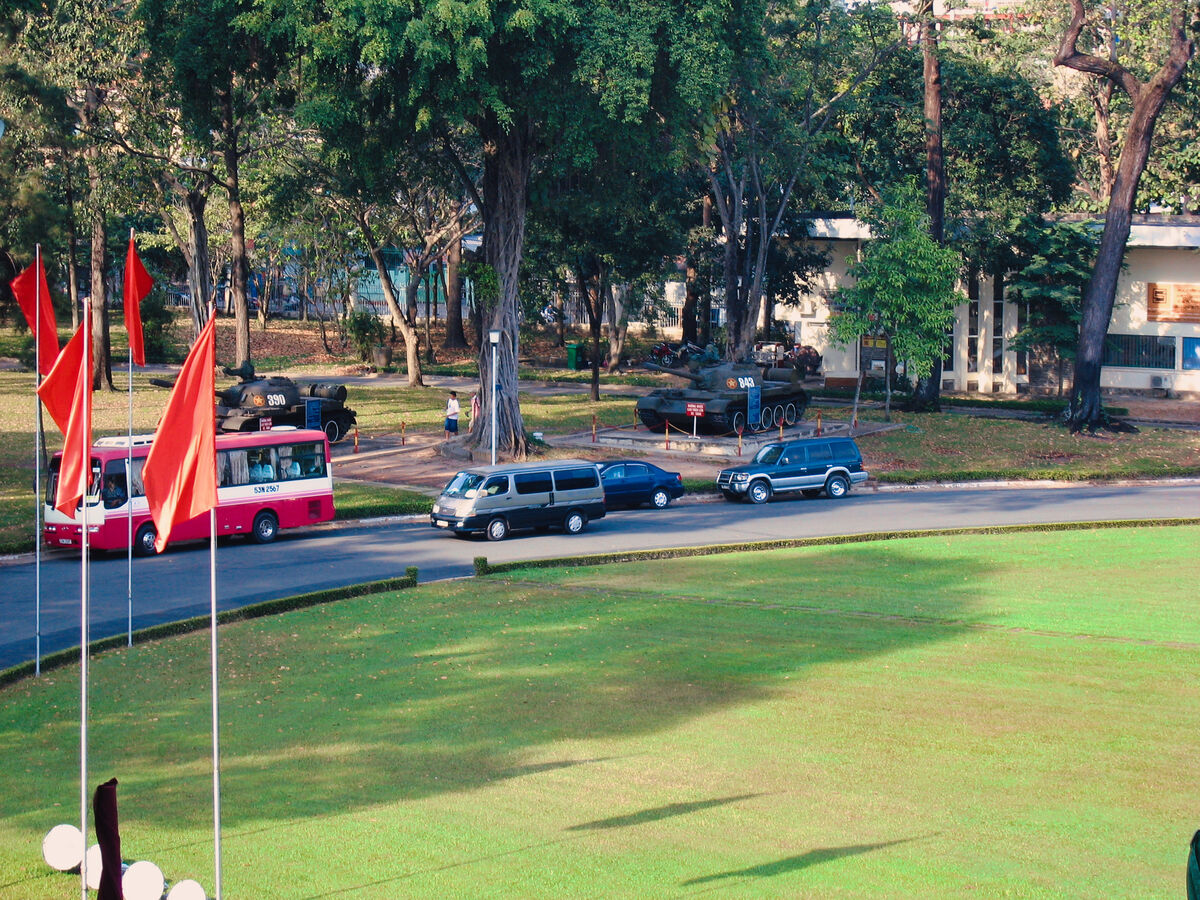
(Download)
Basement bunker War Room - map of the theater of operations 1971
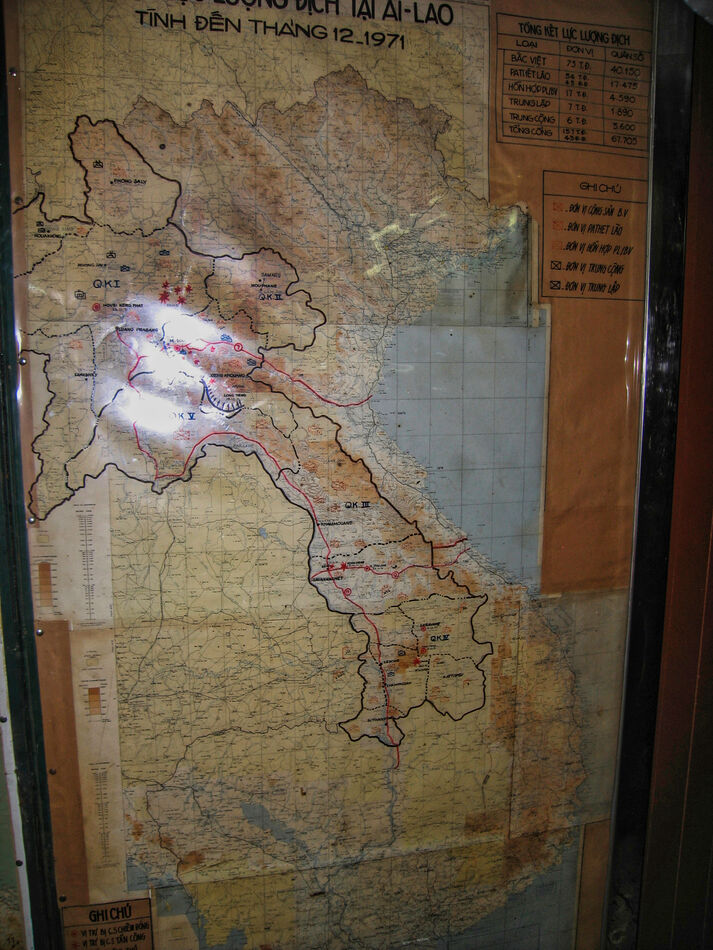
(Download)
Teletype machines in the communications room
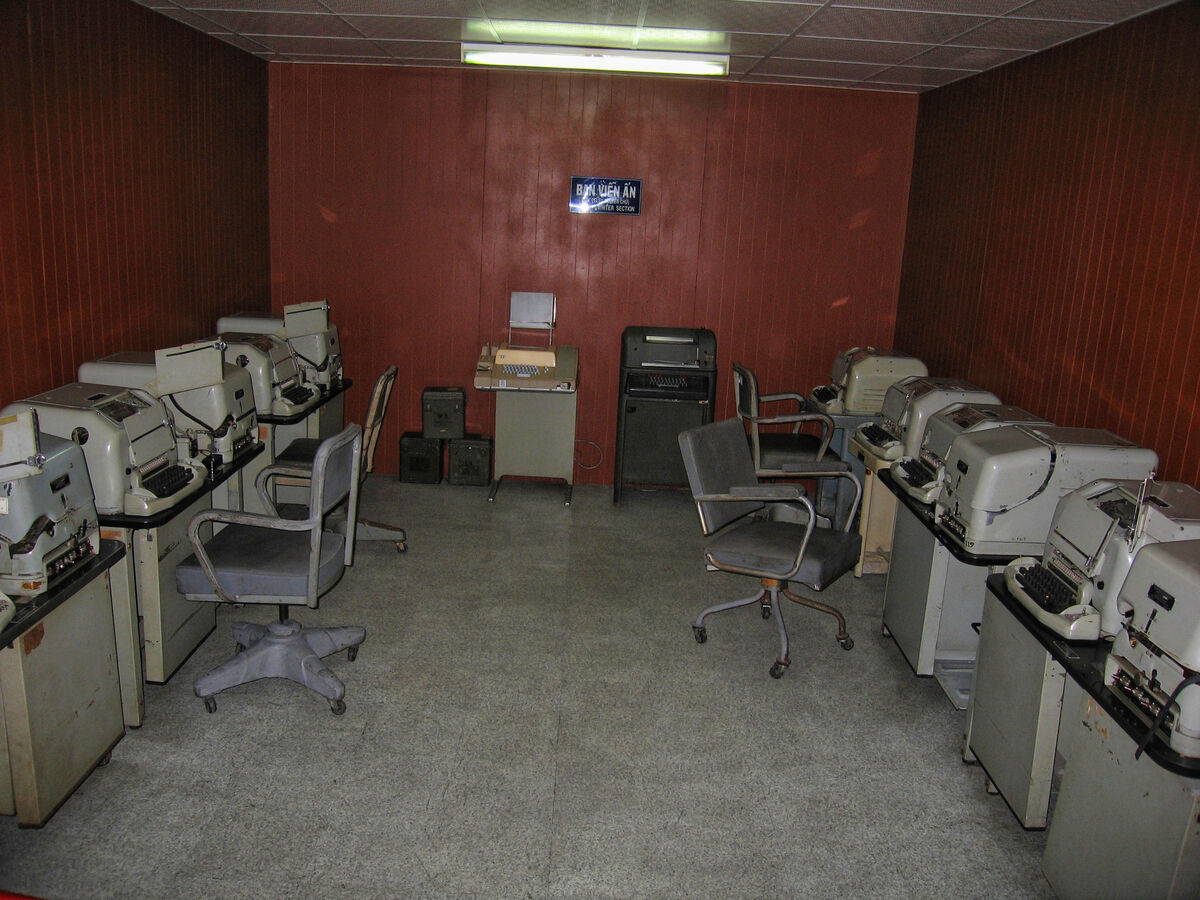
(Download)
Gail preferred the kitchen to the war room
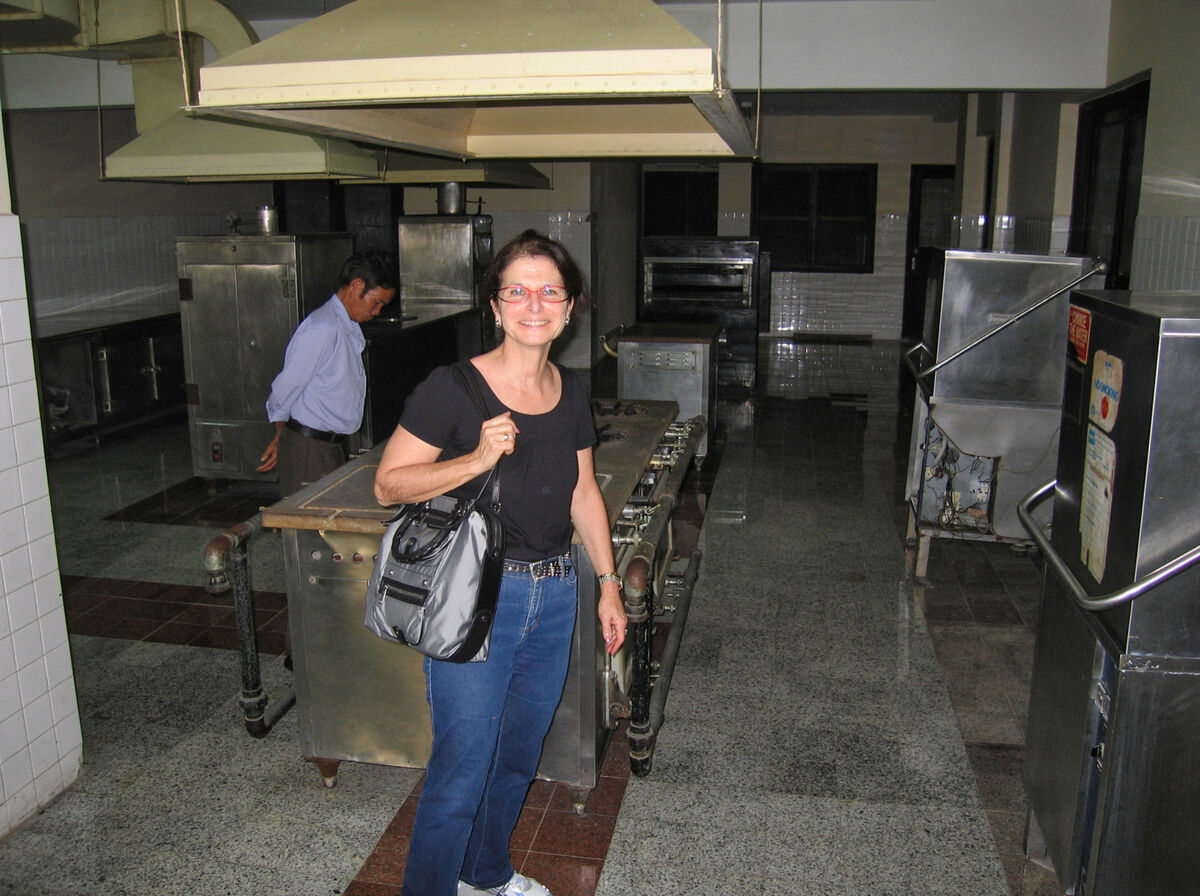
(Download)
Dec 2, 2022 15:24:14 #
Dec 2, 2022 15:42:19 #
Dec 2, 2022 15:46:53 #
srfmhg wrote:
One of the very interesting sites we visited was I... (show quote)
Beautiful job, Doc 🥇🥇🥇🥇🥇
Dec 2, 2022 15:51:53 #
Dec 2, 2022 15:56:54 #
Jusayen
Loc: Oak Ridge,New Jersey
Those photos from that country bring back scary memories, but to see your colorful pictures of a country at peace is a beautiful thing! Keep traveling Doc and keep the photos coming
Dec 2, 2022 16:07:34 #
Dec 2, 2022 16:14:43 #
Dec 2, 2022 17:13:00 #
Dec 2, 2022 18:19:59 #
Dec 2, 2022 18:20:25 #
Dec 2, 2022 18:20:55 #
Dec 2, 2022 18:23:58 #
Jusayen wrote:
Those photos from that country bring back scary memories, but to see your colorful pictures of a country at peace is a beautiful thing! Keep traveling Doc and keep the photos coming
Thank you so much Jusayen. I think all of us in our age group have painful memories of that time - especially those who served there. I completely agree with your point about seeing a country at peace and many more photos to come.
Dec 2, 2022 18:24:41 #
Toment wrote:
Thanks for sharing 👍👍👍
You're most welcome Toment. Thank you for commenting.
Dec 2, 2022 18:26:16 #
UTMike wrote:
Good set and Gail prefers cookies to war!
Thanks so much Mike. She does indeed. I decided to post the kitchen shot of her rather than more old maps and coms equipment.
If you want to reply, then register here. Registration is free and your account is created instantly, so you can post right away.

